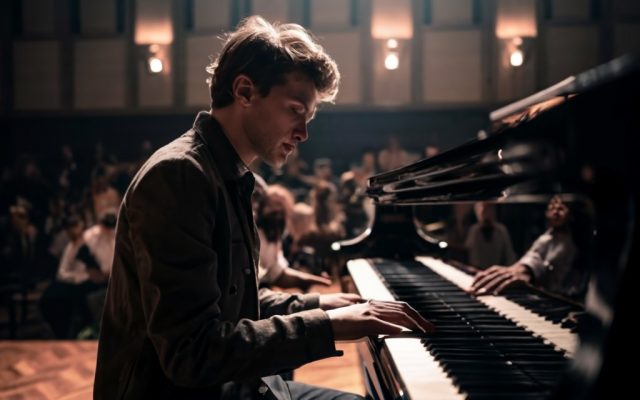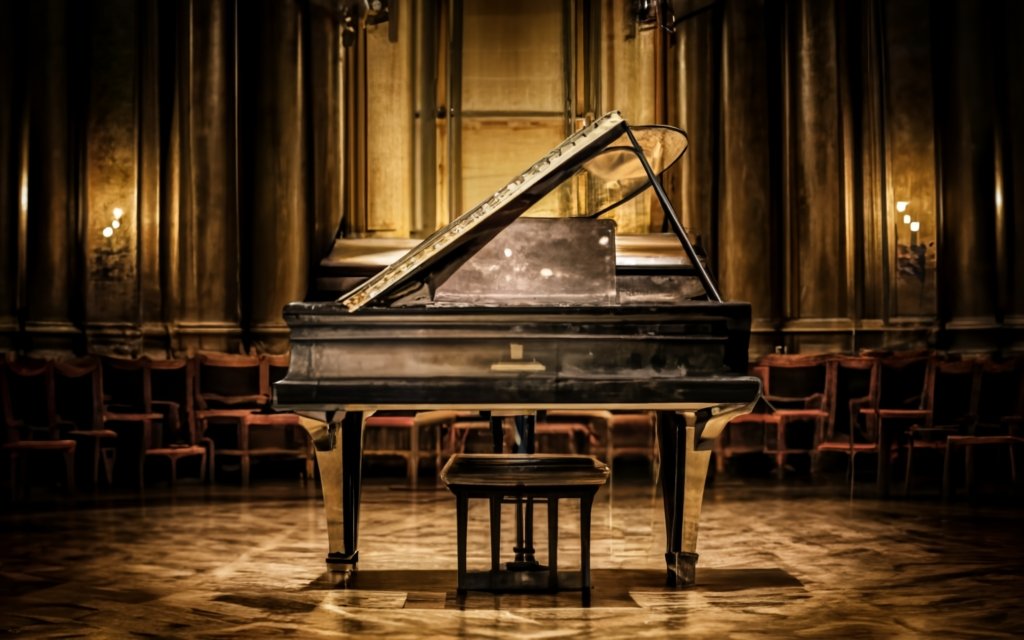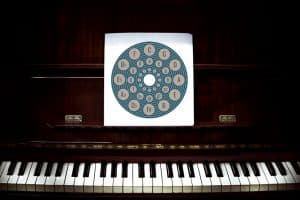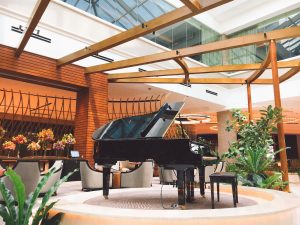Often associated with lively and spirited musical compositions, the rondo form has left an indelible mark on classical and contemporary music alike. Derived from the Italian word “rondò,” meaning “round” or “circle,” the rondo form is characterized by its recurring theme, typically interspersed with contrasting episodes.
From the classical symphonies of Mozart to the progressive rock anthems of the 20th century, the rondo form has proven to be a dynamic canvas for composers to showcase their creativity. In this exploration, we embark on a journey to unravel the intricacies of rondo form, tracing its historical roots, understanding its distinctive structure, and appreciating its enduring appeal.

What is rondo form in music?
Rondo form, a distinctive and enduring musical structure, is defined by the systematic repetition of a principal theme, or refrain, interspersed with contrasting episodes. This form has left an indelible mark on the musical landscape, transcending genres and epochs.
The term “rondo” originates from the Italian word “rondò,” reflecting its circular or rounded nature. This nomenclature aligns with the form’s characteristic recurrence of a central theme.
At its core, the answer to what is rondo in music revolves around the repeated presentation of a primary theme, commonly labeled as “A.” This theme alternates with contrasting sections, often labeled “B,” “C,” and so forth. The recurring “A” sections create a sense of familiarity, while the contrasting episodes add dynamism and intrigue to the composition.
The summary of the video
This video provides a comprehensive overview of the rondo form in classical music. It defines rondo as a structure typically represented by A-B-A-C-A-B-A, with ‘A’ as the main theme interspersed with contrasting episodes ‘B’ and ‘C’. It emphasizes the diversity of rondos, using examples from Mozart to illustrate the form’s varied characteristics.
The video traces the term ‘rondo’ back to French Baroque composers and its links to French Renaissance poetry. It explores the evolution of the form, including variations like the Bagatelle and the A-B-A ternary form.
In conclusion, the rondo is presented as a flexible form that allows composers to take listeners on a circular journey, with the repetition of the main theme being its central feature. The form’s connection to poetry and architecture is highlighted, suggesting its deeper significance beyond its simplicity.
Historical context of rondo form
The evolution and prevalence of rondo form in music are deeply rooted in historical contexts that span centuries and traverse diverse musical traditions. Understanding the historical backdrop provides insight into how this form has endured and adapted over time and will benefit your understanding of music as you learn how to play piano.
Emergence in the classical era
Rondo form gained prominence during the Classical era, particularly in the late 18th century. Renowned composers such as Wolfgang Amadeus Mozart and Ludwig van Beethoven embraced the structure, incorporating it into their symphonies, chamber music, and piano compositions.
Romantic era rondo
As music transitioned into the Romantic era, composers continued to explore and expand upon established forms. Rondo, with its inherent balance of repetition and contrast, found a place in the expressive and emotionally charged compositions of Romantic masters like Franz Schubert and Johannes Brahms.
Rondo form in the 20th century and beyond
The 20th century witnessed the diversification of musical styles and experimentation with form. Rondo, though rooted in tradition, persisted and even found adaptation in genres as varied as jazz, popular music, and contemporary classical compositions.
By delving into the historical evolution of rondo form, we gain a deeper appreciation for its resilience and enduring relevance across different musical epochs.
Understanding the structure of rondo form
Rondo form’s intrinsic charm lies in its well-defined structure, marked by the systematic repetition of a principal theme and contrasting episodes. Exploring the basic definition and common patterns provides a roadmap to grasp the architectural framework of this enduring musical form.
Basic definition and characteristics of rondo form
Rondo form is characterized by the recurring presentation of a central theme, often denoted as “A,” interspersed with contrasting episodes labeled as “B,” “C,” and so forth. The return of the initial theme creates a sense of familiarity, while the contrasting sections add variety and interest to the composition.
Common patterns
Rondo music can take on various patterns, with the most elementary being the simple “ABACA” structure. In this format, the central theme (A) alternates with distinct episodes (B, C), creating a cyclical and engaging progression.
Composers often experiment with more complex patterns, such as “ABACABA,” where additional episodes are introduced between recurring themes. These patterns showcase the flexibility of rondo form and the creative liberties composers employ while adhering to its fundamental structure.
Examples of rondo form in music
Exploring tangible examples of rondo form in both classical and modern music provides a practical understanding of how this structure has been embraced and adapted by composers across different eras.
Examples of rondo form in classical music
Mozart’s Piano Sonata No. 11 in A major, K. 331 (Rondo Alla Turca): This renowned composition by Wolfgang Amadeus Mozart features a lively and recognizable rondo form. The Turkish-inspired rondo, with its distinct “A-B-A-C-A” pattern, showcases Mozart’s adeptness at combining elegance with playfulness.
Beethoven’s Piano Sonata No. 16 in G major, Op. 31, No. 1 (Rondo Allegretto): Beethoven, a master of innovation, incorporated rondo form in this sonata. The recurring “A” theme is interspersed with contrasting episodes, creating a dynamic and expressive musical journey.
Examples of rondo form in modern music:
The Beatles’ “A Hard Day’s Night”: This iconic song from The Beatles follows a modified rondo form, with the distinctive chord sequence serving as the recurring “A” section. The contrasting instrumental and vocal elements contribute to the song’s enduring popularity.
Dave Brubeck’s “Blue Rondo à la Turk”: Jazz pianist Dave Brubeck’s composition is a fusion of jazz and Turkish rhythms. The piece features a complex rondo structure (“A-B-A-C-A”) within a 9/8 time signature, showcasing the adaptability of rondo form in modern genres.
Compositional techniques in rondo form
The utilization of rondo form involves a nuanced interplay of compositional techniques that shape the overall structure and narrative of a musical piece. Examining these techniques provides insight into the craftsmanship of composers who harness the versatility of rondo form.
Motivic development
A hallmark of rondo music is the careful development of musical motifs. Composers often introduce a distinctive melodic or rhythmic idea in the initial “A” section, and throughout subsequent returns, they expand, transform, or embellish these motifs. This approach creates a sense of continuity and cohesion while allowing for creative exploration.
Contrasting episodes
The effectiveness of rondo form lies in the deliberate contrast between the recurring theme and the distinct episodes. Composers employ various techniques, such as changes in key, dynamics, or instrumentation, to differentiate these sections. This interplay of similarity and contrast sustains listener engagement and adds depth to the musical journey.
Transition techniques
Smooth transitions between sections are crucial in maintaining the flow of a rondo composition. Composers use transitional passages to seamlessly connect the returning “A” sections with the contrasting episodes. These transitions can range from subtle modulations to more pronounced shifts, contributing to the overall coherence of the musical narrative.

Coda and resolution
The conclusion of a rondo often involves a coda, a final section that provides resolution and closure. Composers may use this segment to revisit the main theme in a conclusive manner or introduce new material for a satisfying ending. The coda serves as the culminating point, bringing the rondo’s cyclical journey to a definitive close.
The significance of rondo form in music theory and education
Rondo form holds a noteworthy place in music theory and education, serving as a valuable tool for both analysis and pedagogy. Its significance extends beyond historical and stylistic considerations, influencing how musicians comprehend and teach the intricacies of musical composition.
Analyzing and comparing rondo form
Rondo form provides a clear and recognizable structure, making it an ideal subject for analysis in music theory. Students and scholars can dissect compositions to identify recurring themes, contrasting episodes, and the overall organization of musical material.
Comparative analysis of different rondo compositions allows for the examination of compositional choices and the evolution of the form across genres and eras. Additionally, learning how to compare the rondo form with other musical forms like binary form and ternary form will only deepen your understanding of music history and theory.
Educational applications of the rondo form
Rondo form serves as a pedagogical tool for music educators. Its structured nature makes it accessible for teaching basic principles of form and composition to students at various levels. Students can explore their creative instincts within the framework of rondo form, composing pieces that adhere to the structural guidelines while allowing for individual expression.
Aesthetic appreciation and aural skills
Studying rondo form cultivates active listening skills, as listeners become attuned to the recurrence of themes and the nuances of contrasting episodes. Recognition of the compositional techniques within rondo form enhances an individual’s appreciation of the craftsmanship employed by composers.
Bridging historical and contemporary music with rondo
Rondo form’s adaptability makes it a bridge between classical and contemporary music, illustrating its relevance across diverse genres. This adaptability is crucial in fostering a holistic understanding of musical evolution.
Embracing the dynamic legacy of rondo form
In closing, rondo form is a timeless tool in musical composition. From its Classical roots to modern adaptations, the structured recurrence of themes showcases an enduring versatility that transcends genres.
In education, rondo form becomes a valuable analytical tool, connecting historical traditions with contemporary creativity. Its adaptability and role in shaping musical narratives underscore its significance in both theory and practice. Connecting the rondo form with an online piano lessons app like Skoove further cements the rondo form’s legacy.
Celebrating the rhythmic journey of recurring themes and contrasting episodes, rondo form invites us to appreciate the artistry that spans the diverse landscapes of music. It stands as a dynamic and captivating element, weaving through time and leaving an indelible mark on the rich tapestry of musical expression.
Author of this blog post:

Eddie Bond is a multi-instrumentalist performer, composer, and music instructor currently based in Seattle, Washington USA. He has performed extensively in the US, Canada, Argentina, and China, released over 40 albums, and has over a decade experience working with music students of all ages and ability levels.














